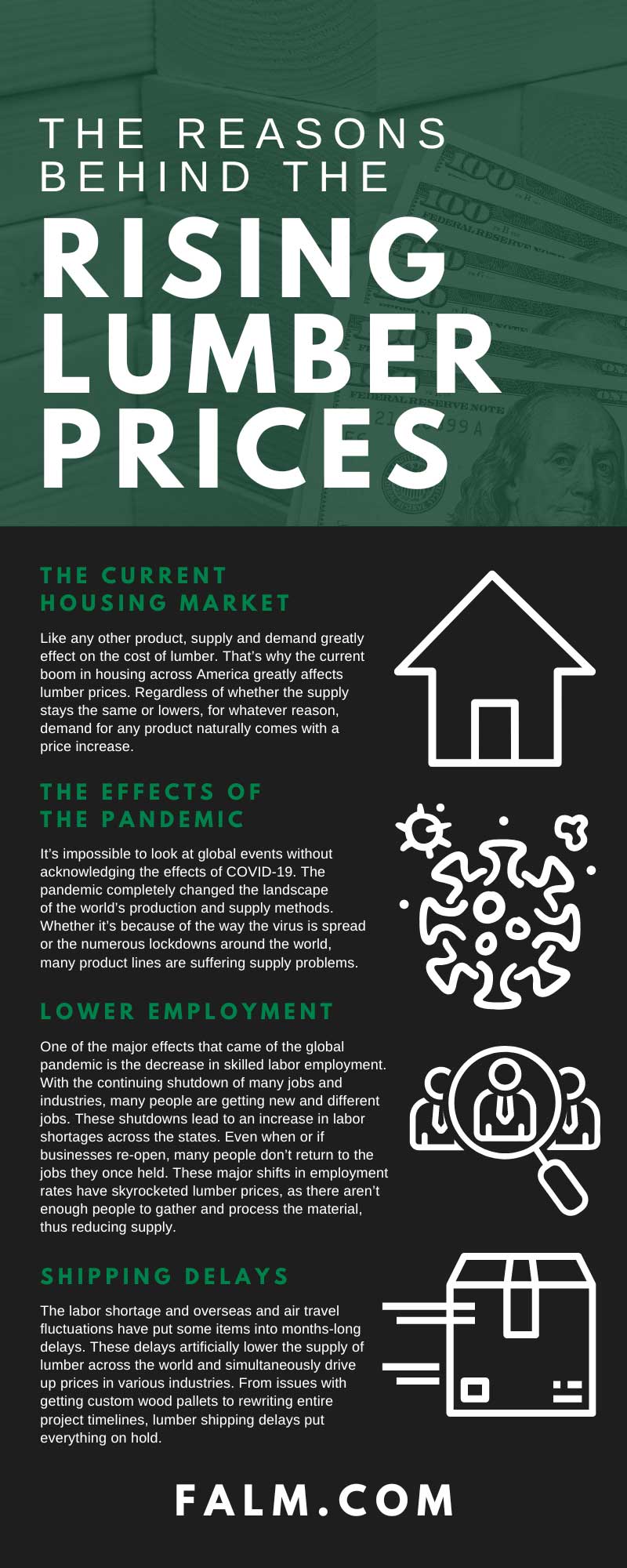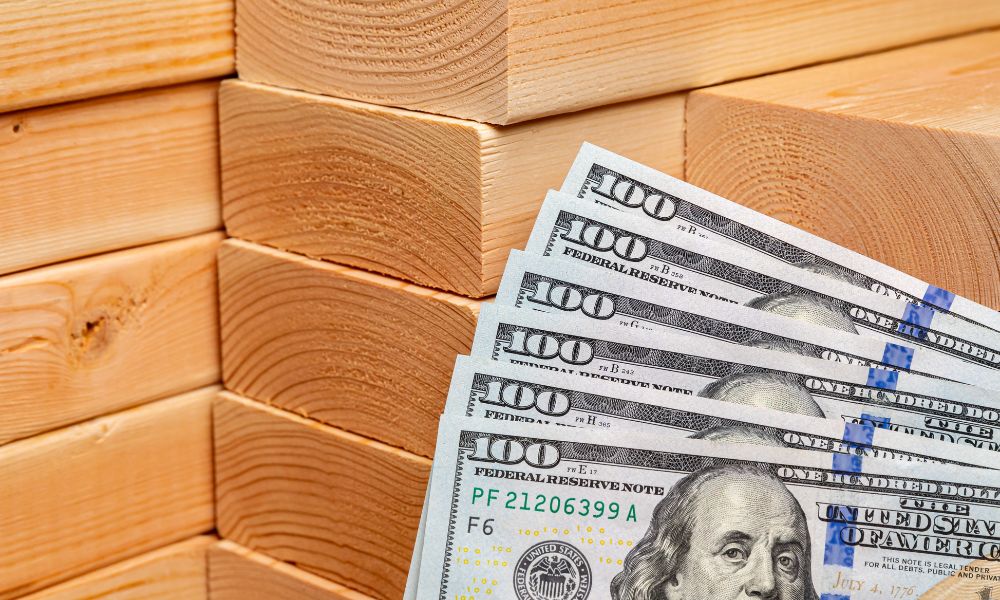For the last couple of years, the price of lumber has been at a historic high, and it’s had a lot of impact on people’s ability to construct and renovate their commercial buildings and homes. The increase in lumber prices may seem odd, but it’s possible to trace the reasons for the increase. This article will try to help you understand why the price of lumber is higher than normal and has been for the last year or two.
The Uses of Lumber
To understand the full impact of the price of lumber, you need to first know the breadth of the lumber industry. The main use of lumber and the highest demand for the resource comes from the construction industry. Most homes and buildings utilize lumber as a construction material, so every state and city needs lumber to help with growth, and every person needs it if they want to renovate or build a home.
The Global Environment
Lumber is a vital resource for modern construction across the world. It is a resource found across the planet. That’s why any major event happening anywhere in the world can impact on the price of lumber. However, the current price hikes come from a few key events, and here’s a rundown of them.
The Current Housing Market
Like any other product, supply and demand greatly effect on the cost of lumber. That’s why the current boom in housing across America greatly affects lumber prices. Regardless of whether the supply stays the same or lowers, for whatever reason, demand for any product naturally comes with a price increase.
The Effects of The Pandemic
It’s impossible to look at global events without acknowledging the effects of COVID-19. The pandemic completely changed the landscape of the world’s production and supply methods. Whether it’s because of the way the virus is spread or the numerous lockdowns around the world, many product lines are suffering supply problems.
Lower Employment
One of the major effects that came of the global pandemic is the decrease in skilled labor employment. With the continuing shutdown of many jobs and industries, many people are getting new and different jobs. These shutdowns lead to an increase in labor shortages across the states. Even when or if businesses re-open, many people don’t return to the jobs they once held. These major shifts in employment rates have skyrocketed lumber prices, as there aren’t enough people to gather and process the material, thus reducing supply.
Shipping Delays
The labor shortage and overseas and air travel fluctuations have put some items into months-long delays. These delays artificially lower the supply of lumber across the world and simultaneously drive up prices in various industries. From issues with getting custom wood pallets to rewriting entire project timelines, lumber shipping delays put everything on hold.
Other Factors
Outside the pandemic, multiple major causes are part of the increased cost of lumber. While the pandemic did have a large impact on the cost, these are a few of the other major events that keep the prices high even as the effects of the pandemic resolve themselves. All these effects negatively impact the supply of lumber in the United States and lead directly to an increase in price.
Rampant Wildfires
In 2021 and 2022, the western parts of North America and Canada saw major droughts and high temperatures. The lack of water and high heat put the lands in prime position for some of the biggest wildfires in recent memory, as both governments were unable to fight off the large fires. Meaning in 2021 alone, at least 5.6 million acres of land were burned in the US. Canada saw 10 million acres burn in that same timeframe. These extreme forest fires have a huge impact on the availability of lumber and are a large part of the reason for the price increase.
Extreme Weather
Whether it is just a coincidence or because of the effects of global climate change, extreme weather continues to strike the US. These major weather events lead to a decrease in lumber as the weather prevents laborers from gathering lumber in multiple places around the States.
Government Tariffs
Governments often implement tariffs to pressure imports to stop or control the number of goods flowing into a country. They can be very helpful, as importing too many goods can strain the economy, but at the same time, it does limit how much of a certain product can enter a country. Currently, there’s a tariff on lumber from Canada, which indirectly limits how much wood we get from the north. As a result, this lumber tariff decreases the supply of lumber in America and increases the costs of lumber.
Economic Meaning
Each of these factors greatly influences the price of lumber and creates an even larger impact on the economy as a whole. Higher prices mean money is less effective, which can have rippling effects across the nation. That’s why understanding changes in supply and demand, and the history of lumber prices, can be important when determining the future of the economy and lumber industry.
Low Supply and High Demand
Currently, lumber is suffering from a situation affecting many products and goods worldwide: low supply with high demand. As a result, the low lumber supply creates scarcity, which causes lumber prices to increase.
Price Volatility
Price volatility is a way to measure the changes in the price of a good throughout the years. Some products have higher price volatility, which means major national or world events greatly impact the price of a product. Lumber is a material with high price volatility, so it can be more reactionary to changes than many other products. Calculating price volatility is important if you’re trying to understand current economic situations, as the price of lumber will frequently change.
Even with a thorough understanding of why lumber prices are so high, it’s difficult to know when or if the price will decrease. The high volatility and the random events of the world can massively shift the cost of lumber at any time. But this should help you understand the price increases over the last few years and why it’s remaining high even as time goes on and things slowly recover.


